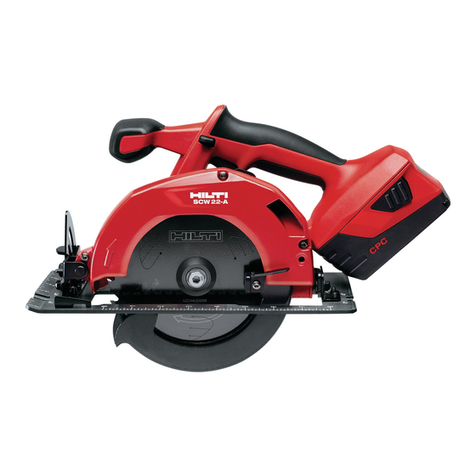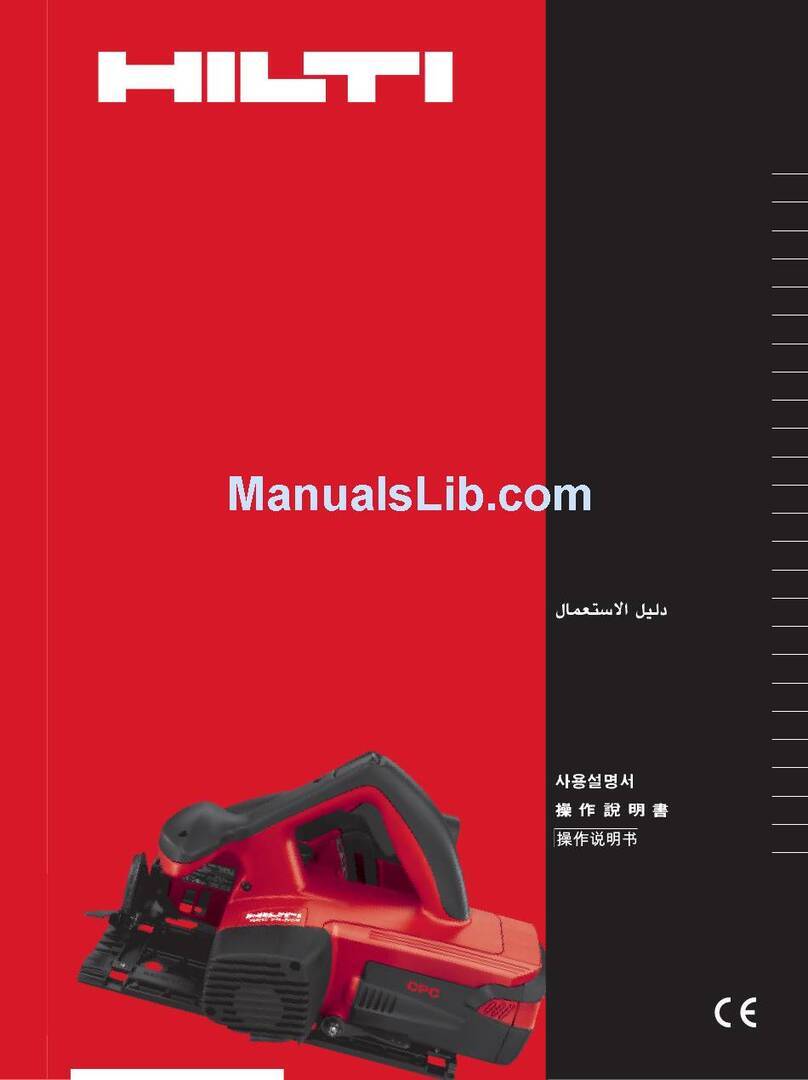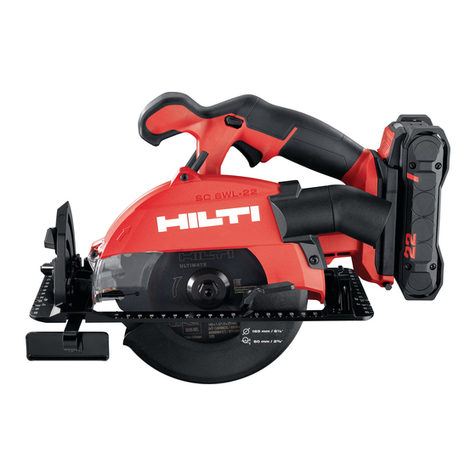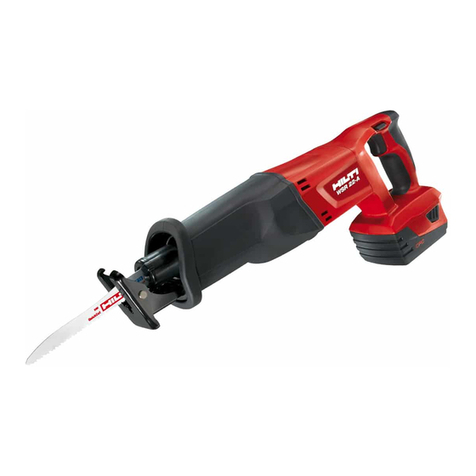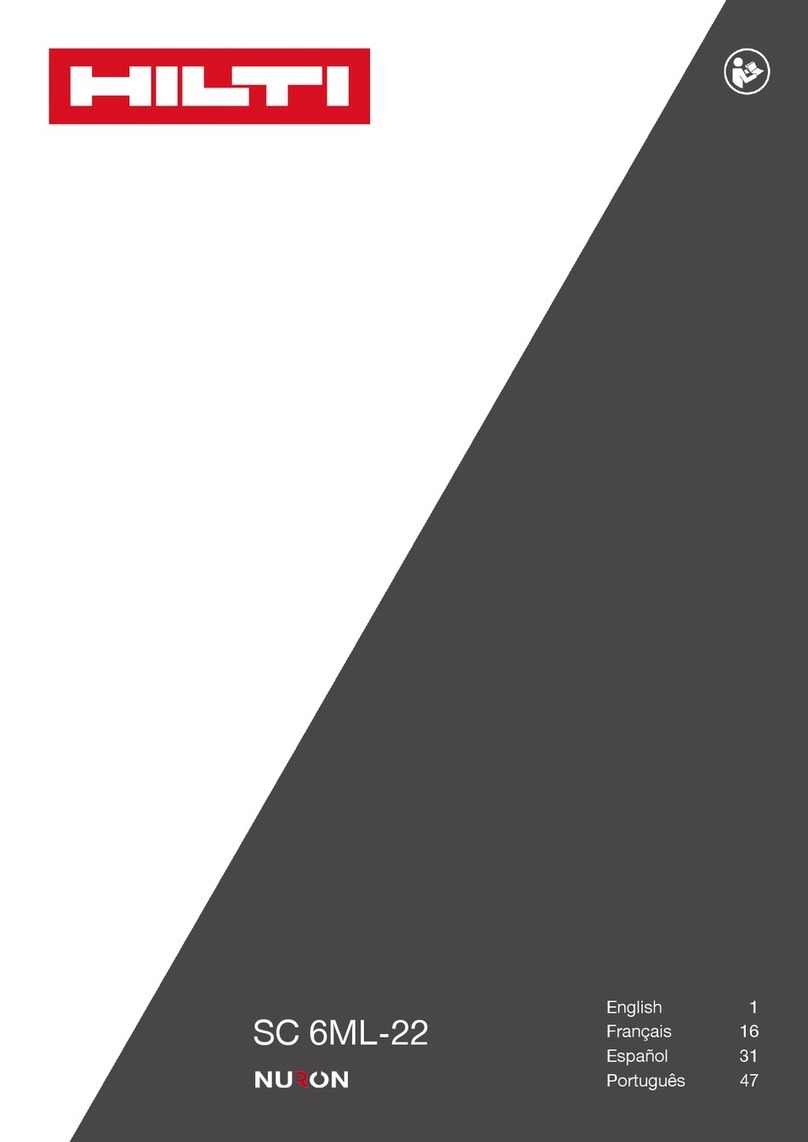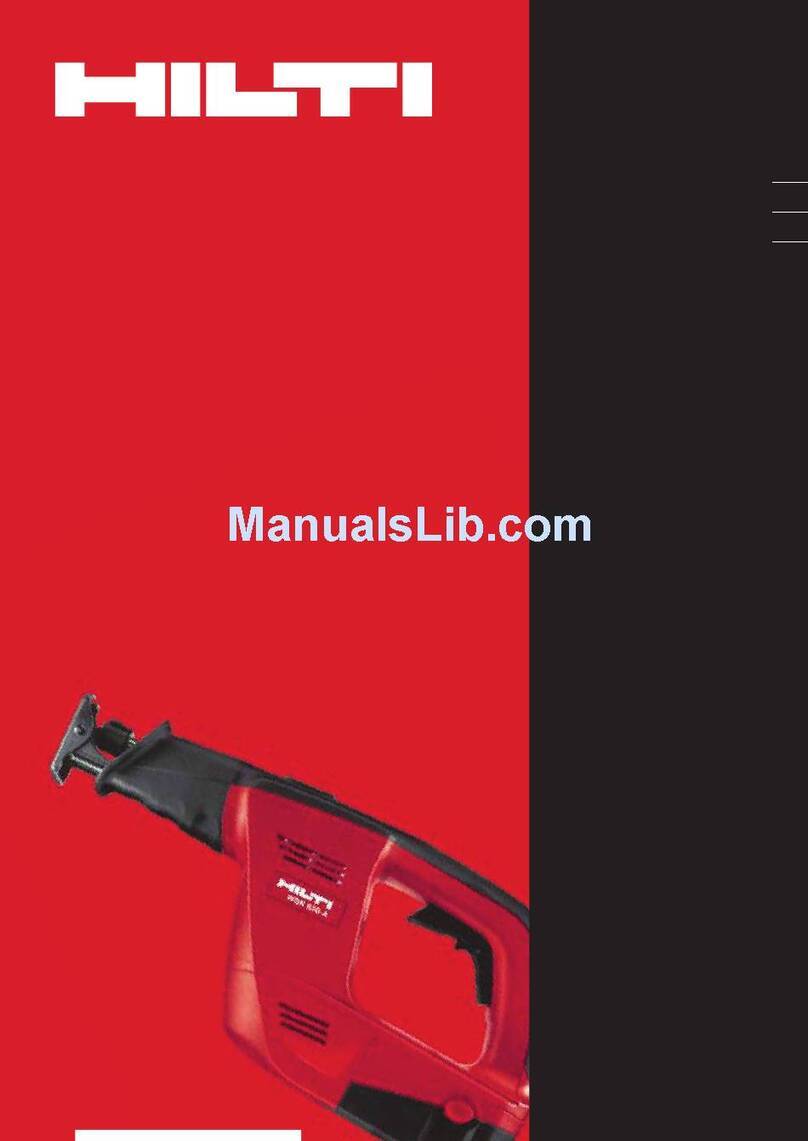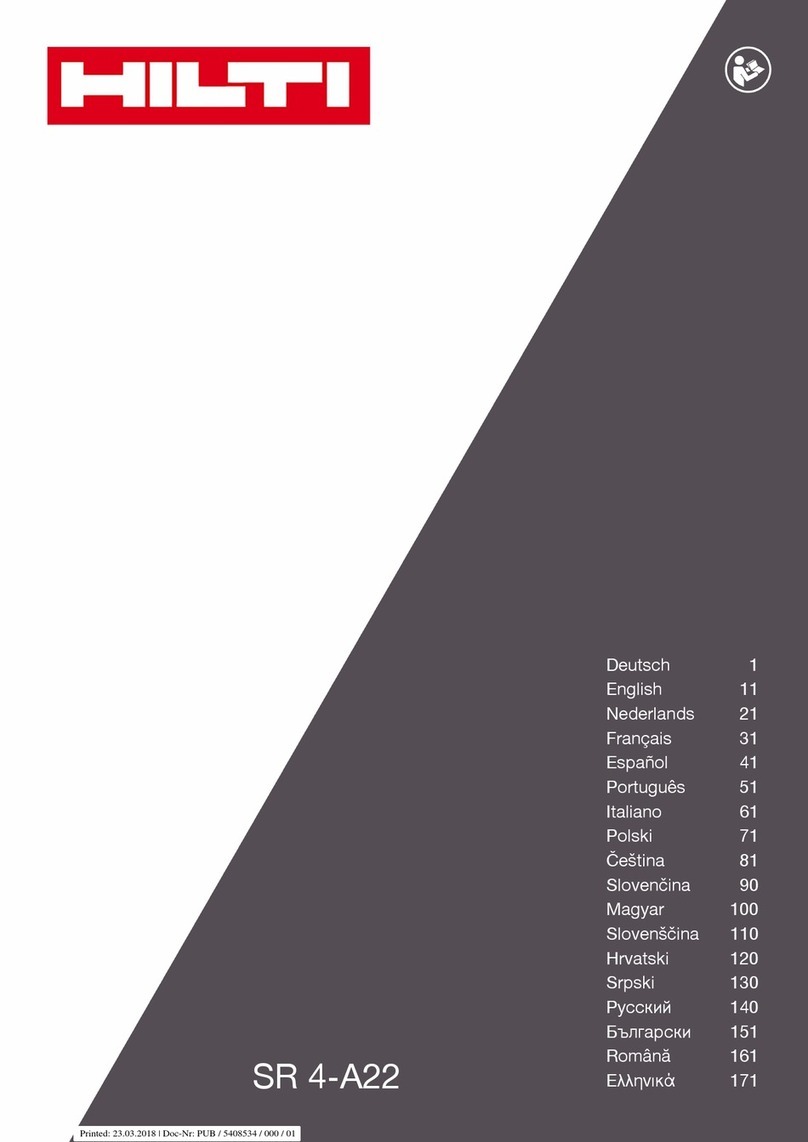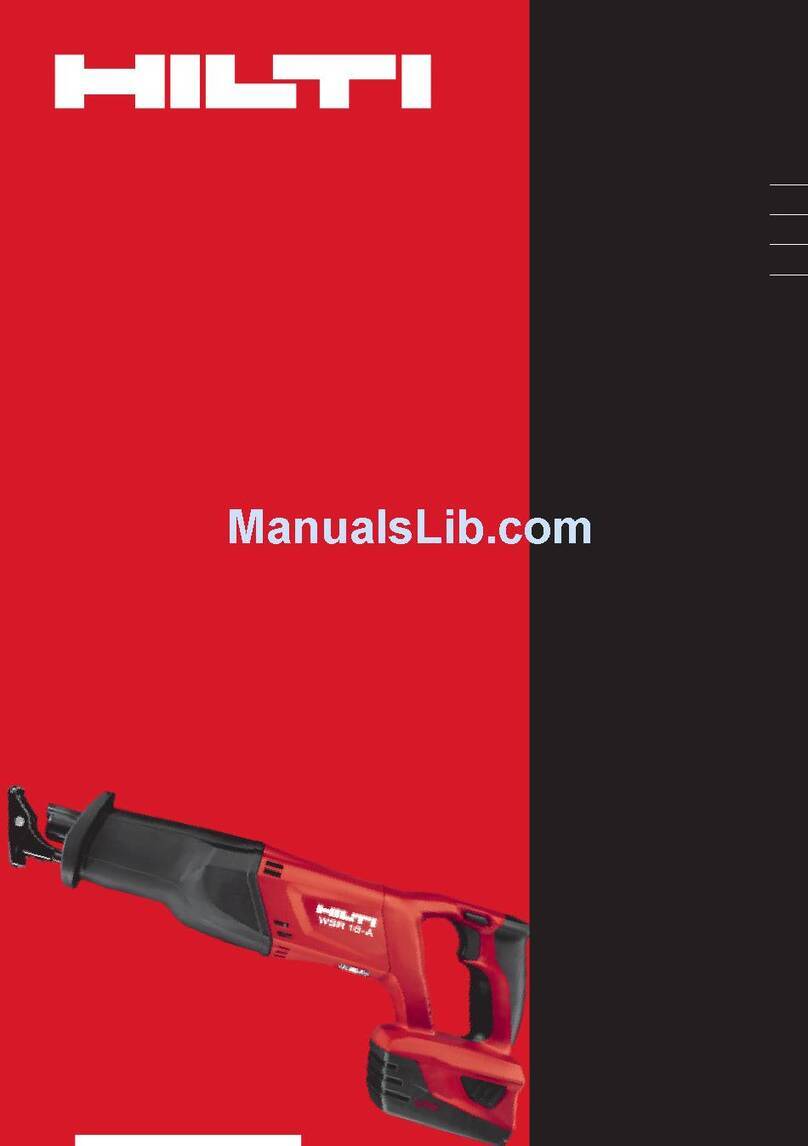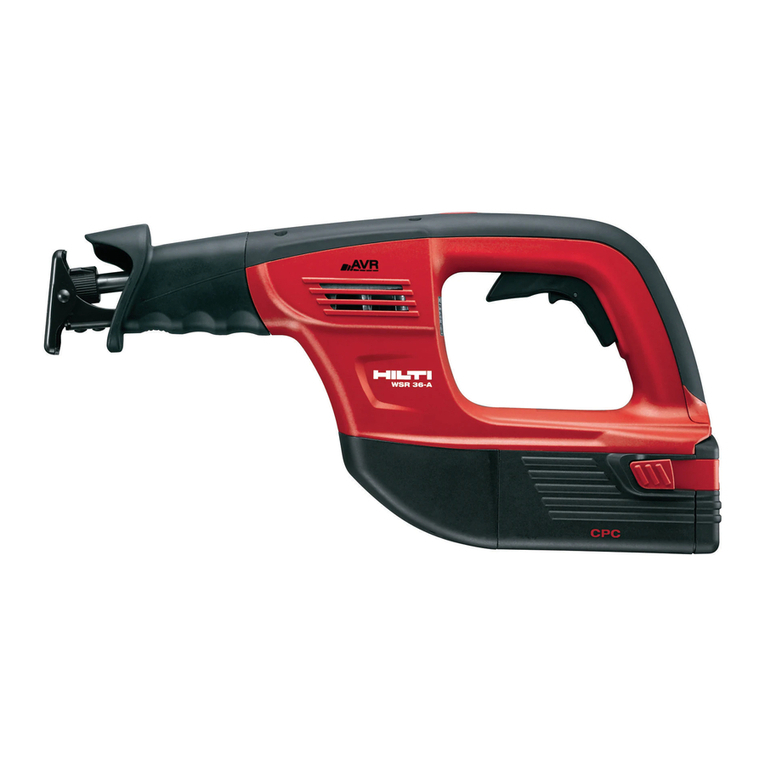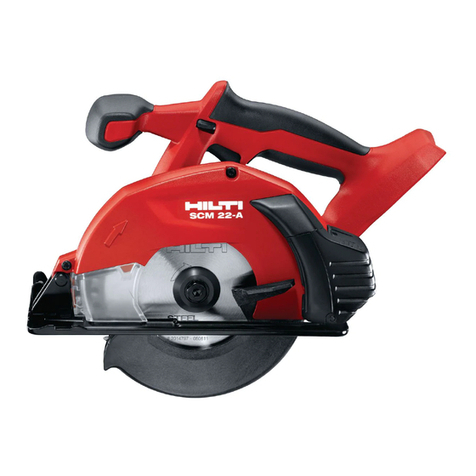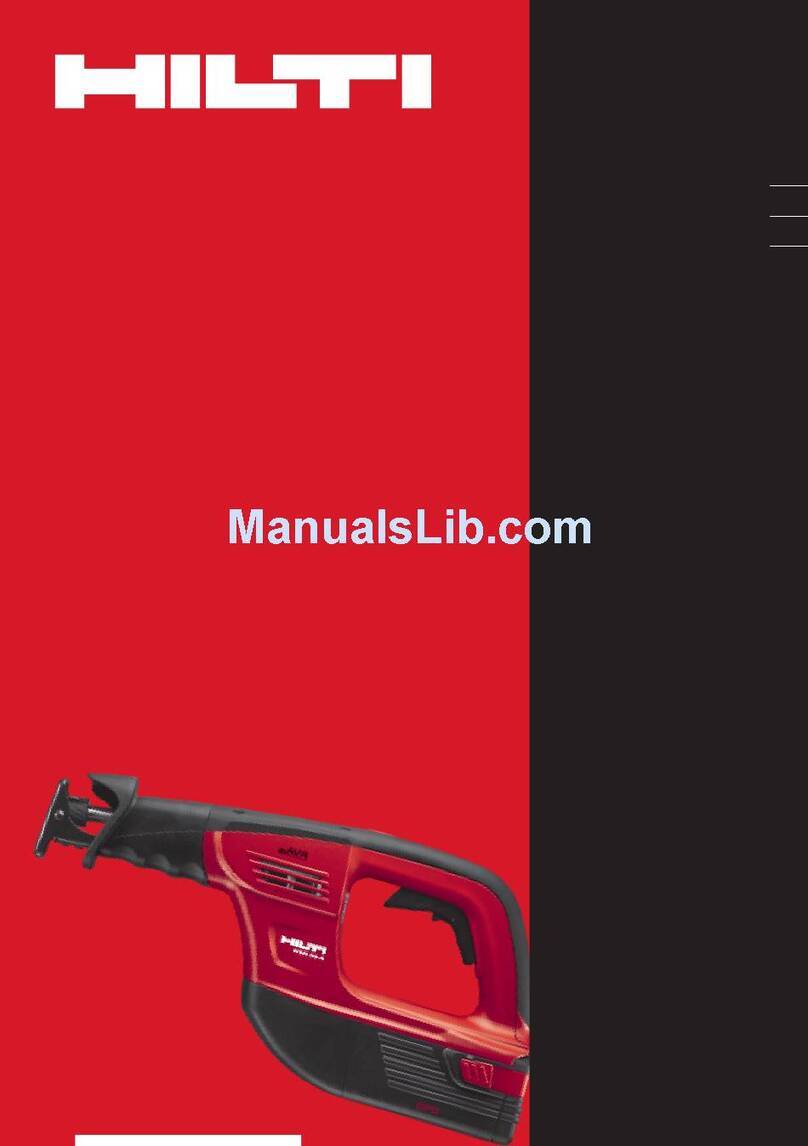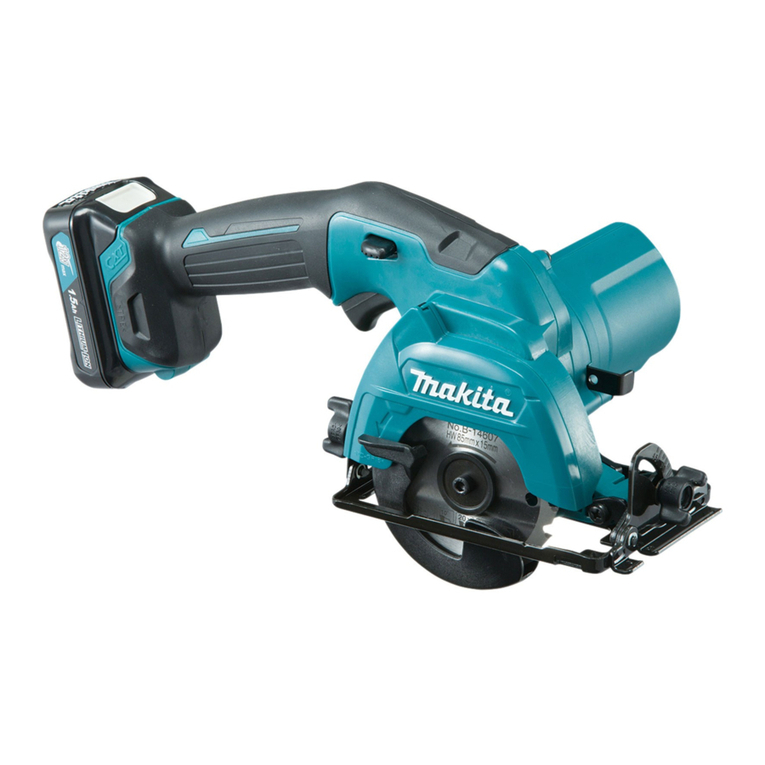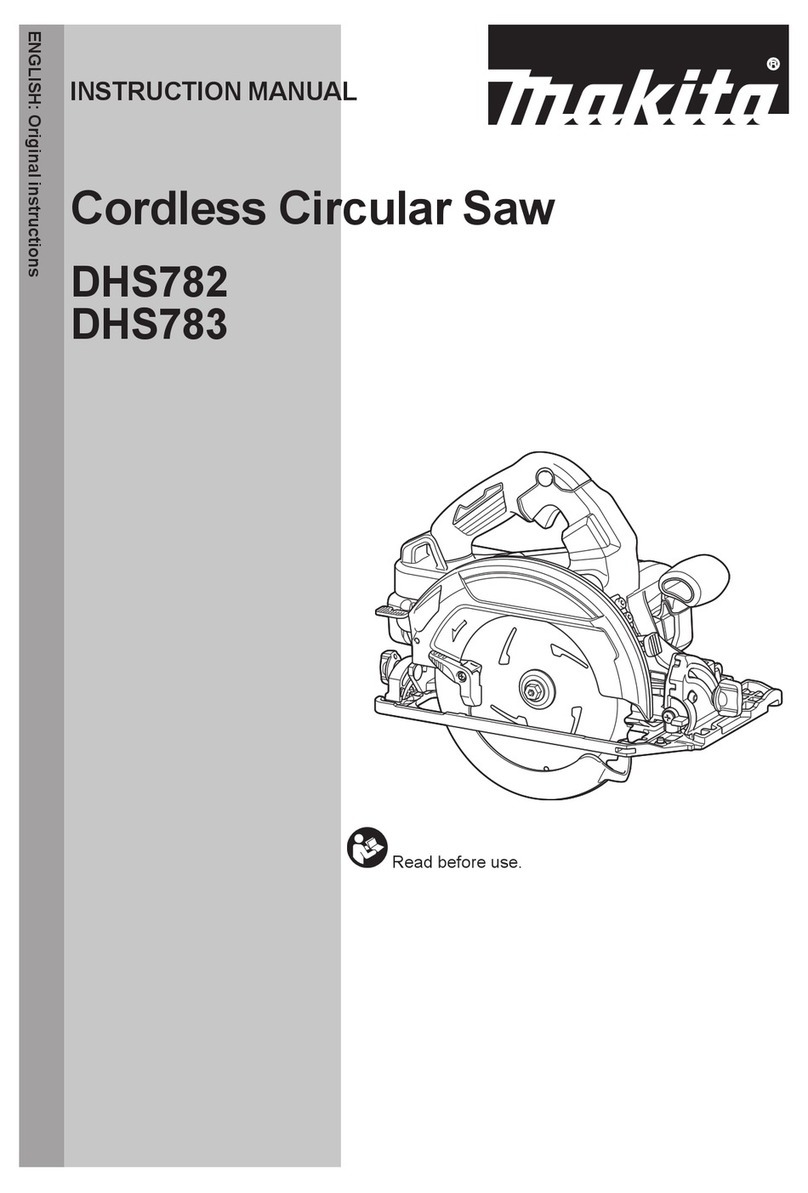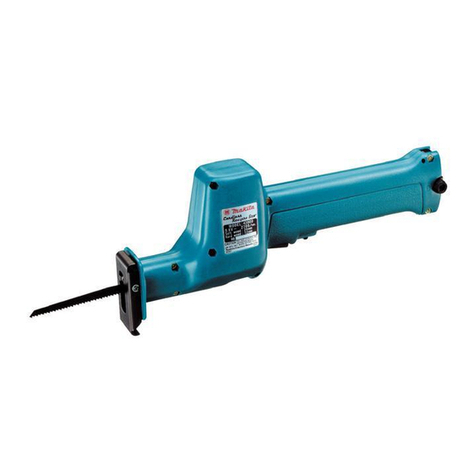
h) Never use damaged or incorrect blade washers
or bolt. The blade washers and bolt were specially
designed for your saw, for optimum performance and
safety of operation.
2.2.2 Further safety instructions for all saws
Kickback causes and related warnings
kickback is a sudden reaction to a pinched, bound or
misaligned saw blade, causing an uncontrolled saw to lift
up and out of the workpiece toward the operator;
when the blade is pinched or bound tightly by the kerf
closing down, the blade stalls and the motor reaction
drives the unit rapidly back toward the operator;
if the blade becomes twisted or misaligned in the cut, the
teeth at the back edge of the blade can dig into the top
surface of the wood causing the blade to climb out of the
kerf and jump back toward the operator.
Kickback is the result of saw misuse and/or incorrect
operating procedures or conditions and can be avoided
by taking proper precautions as given below.
a) Maintain a firm grip with both hands on the saw
and position your arms to resist kickback forces.
Position your body to either side of the blade, but
notinlinewiththeblade.Kickback could cause the
saw to jump backwards, but kickback forces can be
controlled by the operator, if proper precautions are
taken.
b) When blade is binding, or when interrupting a
cut for any reason, release the trigger and hold
the saw motionless in the material until the blade
comes to a complete stop. Never attempt to re-
move the saw from the work or pull the saw back-
ward while the blade is in motion or kickback
may occur. Investigate and take corrective actions
to eliminate the cause of blade binding.
c) When restarting a saw in the workpiece, centre
the saw blade in the kerf and check that saw
teeth are not engaged into the material. If saw
blade is binding, it may walk up or kickback from the
workpiece as the saw is restarted.
d) Support large panels to minimise the risk of blade
pinching and kickback. Large panels tend to sag
under their own weight. Supports must be placed
under the panel on both sides, near the line of cut
and near the edge of the panel.
e) Do not use dull or damaged blades. Unsharpened
or improperly set blades produce narrow kerf causing
excessive friction, blade binding and kickback.
f) Blade depth and bevel adjusting locking levers
must be tight and secure before making cut. If
blade adjustment shifts while cutting, it may cause
binding and kickback.
g) Use extra caution when sawing into existing walls
or other blind areas. The protruding blade may cut
objects that can cause kickback.
2.2.3 Safety instructions for circular saws with
pendulum guard
Lower guard function
a) Check lower guard for proper closing before each
use. Do not operate the saw if lower guard does
not move freely and close instantly. Never clamp
or tie the lower guard into the open position. If saw
is accidentally dropped, lower guard may be bent.
Raisethelowerguardwiththeretractinghandleand
make sure it moves freely and does not touch the
blade or any other part, in all angles and depths of
cut.
b) Check the operation of the lower guard spring.
If the guard and the spring are not operating
properly, they must be serviced before use. Lower
guard may operate sluggishly due to damaged parts,
gummy deposits, or a build-up of debris.
c) Lower guard may be retracted manually only for
special cuts such as “plunge cuts” and “com-
pound cuts.” Raise lower guard by retracting
handle and as soon as blade enters the mater-
ial, the lower guard must be released. For all other
sawing, the lower guard should operate automatic-
ally.
d) Always observe that the lower guard is covering
the blade before placing saw down on bench or
floor. An unprotected, coasting blade will cause the
saw to walk backwards, cutting whatever is in its
path. Be aware of the time it takes for the blade to
stop after switch is released.
2.3 Additional safety instructions
2.3.1 Personal safety
a) Modification of the machine or tampering with its
parts is not permissible.
b) Wear ear protectors. Exposure to noise can cause
hearing loss.
c) Breathing protection must be worn if the power
tool is used without a dust removal system for
work that creates dust.
d) Do not operate the power tool without the pro-
tective devices that belong to it.
e) Improve the blood circulation in your fingers by
relaxing your hands and exercising your fingers
during breaks between working.
f) Switch the power tool on only after bringing it into
position at the workpiece.
g) Remove the battery before storing or transporting
the tool.
h) Always guide the power tool away from your body
when working with it.
i) Do not work with the power tool overhead.
j) Do not attempt to brake the speed of the saw
blade by pressing it laterally against the work-
piece or some other object.
k) Do not touch the clamping flange, the clamping
screw or the saw blade while the power tool is
running.
l) The kerf must be free of obstructions. Do not saw
into screws and nails etc.
m) Never press the drive spindle lockbutton while the
saw blade is rotating.
n) Never direct the power tool toward persons.
en
4
Printed: 28.05.2015 | Doc-Nr: PUB / 5206198 / 000 / 02
